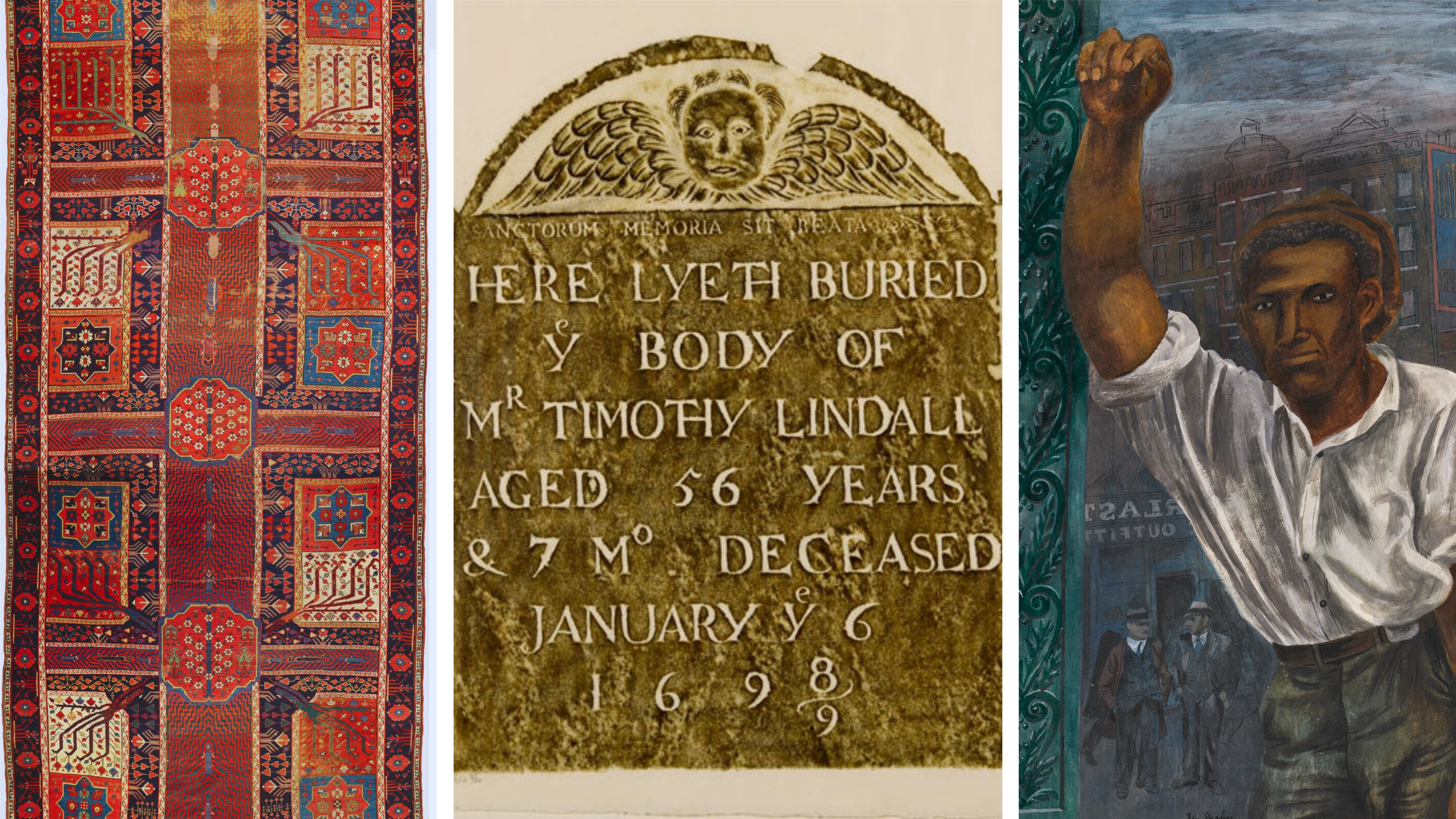Collections

Drawn to Earth: Contemporary Art and Environment in the Americas
A recent installation asks how and why artists in the Americas today utilize the practice of drawing to address topics of land, territory, ecological crisis, and our own relationship as humans to the other-than-human world.
By Madeline Murphy Turner

Collections in Motion: What’s New on View
Our galleries are ever-changing, with new installations occurring each month throughout the museums. This spring, explore newly installed art, including these three dynamic and captivating works.
By Tara Metal

Katharina Sieverding’s Transformer
Curatorial fellow Peter Murphy sheds light on a recent installation he curated featuring works by German artist Katharina Sieverding.
By Peter Murphy

Collections in Motion: What’s New on View
Our galleries are ever-changing, with new installations occurring each month throughout the museums. This fall, we’re welcoming rarely seen works of art into our galleries and celebrating diverse materials and styles.
By Tara Metal

Fostering Museum Literacy and Museum-Going Identity at the Harvard Art Museums
Two staff members from our Division of Academic and Public Programs discuss how the museums foster museum literacy and a sense of welcome among student visitors.
By Jen Thum, Sarah Lieberman

Artworks in Honor of Director Martha Tedeschi’s Tenure
Upon director Martha Tedeschi’s departure after eight years of leadership, gifts of art were made in her honor.
By Jennifer Aubin

Collections in Motion: What’s New on View
Looking for inspiration for your next visit? In this series, we highlight three recently installed objects in our permanent collections galleries.
By Tara Metal
LaToya M. Hobbs and the Art of Citation
In her print series Carving Out Time, LaToya Hobbs references works by seven Black American artists; Harvard graduate student Nora Rosengarten shares a reading list for visitors to learn more about the artists that inspire Hobbs.
By Nora M. Rosengarten
The Beginnings of Art History at Harvard, Part 2: Charles Herbert Moore, John Ruskin, and the Teaching of Drawing
With John Ruskin’s guidance, Harvard’s Fine Arts instructor Charles Herbert Moore established drawing and the practice of copying as the foundation to the study of art history in the United States.
By Marjorie B. Cohn
The Beginnings of Art History at Harvard, Part 1: Charles Eliot Norton, John Ruskin, and the Teaching of Art History
When Harvard introduced art history into the American academic curriculum in 1874, by way of Charles Eliot Norton, John Ruskin’s scholarship and teaching provided the model. This is the first of two articles about the foundation of art history as a discipline in the United States.
By Marjorie B. Cohn